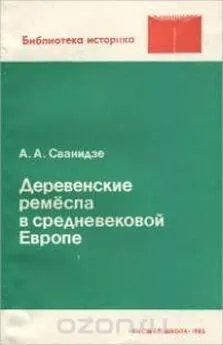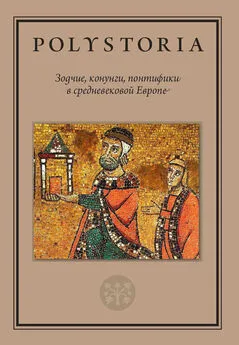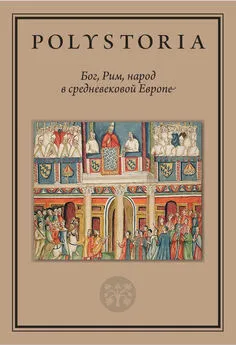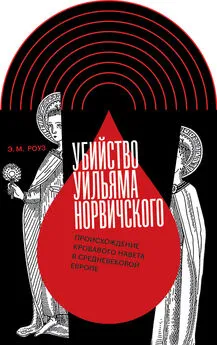Михаил Бойцов - Бог, Рим, народ в средневековой Европе
- Название:Бог, Рим, народ в средневековой Европе
- Автор:
- Жанр:
- Издательство:Издательский дом Высшей школы экономики
- Год:2021
- Город:Москва
- ISBN:978-5-7598-2285-1
- Рейтинг:
- Избранное:Добавить в избранное
-
Отзывы:
-
Ваша оценка:
Михаил Бойцов - Бог, Рим, народ в средневековой Европе краткое содержание
Книга адресована историкам, филологам, историкам искусства, религиоведам, культурологам и политологам, а также широкому кругу читателей, интересующихся историей Европы.
Бог, Рим, народ в средневековой Европе - читать онлайн бесплатно ознакомительный отрывок
Интервал:
Закладка:
679
Агоштон М. Великокняжеская печать 1497 г. К истории формирования русской государственной символики. М., 2005.
680
Петрухин В. Я. Начало этнокультурной истории Руси IX–XI вв. Смоленск; М., 1995; Он же. О «нечестивых» народах на Страшном суде: эсхатологический и иконографический мотив // Он же. «Русь и вси языци». Аспекты ист. взаимосвязей: ист. — археолог. очерки. М., 2011. С. 302–310.
681
Седов В. В. Древнерусская народность. Историко-археологическое исследование. М., 1999. C. 219–222 («Об этническом самосознании восточнославянской общности»). (Studia Historica).
682
Plokhy S. The Origins of the Slavic Nations. Premodern Identities in Russia, Ukraine, and Belarus. Cambridge, 2006.
683
Например: Русский народ. Терминология, исследования, анализ. Жуковский; М., 2001; Малков Ю. Г. Русь Святая. Очерки истории православия в России. М., 2002; Малков Г. , диакон. Контрреволюция духа. Святая Русь и возрождение России (церковно-политические очерки). М., 2006.
684
Cherniavsky M. Russia // National Consciousness, History, a. Political Culture in Early-Modern Europe / ed. by O. Ranum. Baltimore; L., 1975. P. 118–143. «Well, what are „we“? What is Russia? Moscow? And implicitly, what are the Russians? I submit, essentially, they are the triad: Autocrat. Orthodoxy, Empire… These strands do not make up a national consciousness; but perhaps we can see them as basic elements of a national subconsciousness, in the sense that they are the bricks out of which the structure of national consciousness was later built» (Ibid. P. 129–130).
685
Miller D. The Velikie Minei Chetii and the Stepennaia Kniga of Metropolitan Makarii and the Origins of Russian National Consciousness // FOG. 1979. Bd. 26. P. 263–382; Idem. Saint Sergius of Radonezh, His Trinity Monastery, and the Formation of the Russian Identity. DeKalb, 2010.
686
Bushkovitch P. The Formation of a National Consciousness in Early Modern Russia // Harvard Ukrainian Studies. 1986. Vol. X. No. 3–4. P. 355–376; Idem. What Is Russia? Russian National Identity and the State, 1500–1917 // Culture, Nation, a. Identity. The Ukrainian-Russian Encounter (1600–1945) / ed. by A. Kappeler, Z. E. Kohut, F. E. Sysyn, a. M. v. Hagen. Edmonton; Toronto, 2003. P. 144–161; Бушкович П. Православная церковь и русское национальное самосознание XVI–XVII вв. // Ab Imperio. 2003. № 3. С. 101–117. С работами П. Бушковича перекликается статья: Kohut Z. E. A Dynastic or Ethno-Dynastic Tsardom? Two Early Modern Concepts of Russia // Extending the Borders of Russian History. Essays in Honor of A. J. Rieber / ed. by M. Siefert. Budapest; N. Y., 2003. P. 17–30.
687
Bushkovitch P. What Is Russia?.. Р. 145.
688
Ibid. («If I am right, then the identity found in the term „Russia“ was of a type that could be called statist or even dynastic»).
689
Ibid. P. 147.
690
Ibid. P. 149.
691
Ibid. P. 151–152.
692
В частности, «русский национализм» «had no substantial influence on Russian policy toward the Muslims. The autocratic state remained mistrustful of nationalism… Until the end of the czardom, Russian nationalism did not become a guiding ideology of the state; rather, it was pre-nationalistic and supranational ideas that were decisive for the regime» ( Kappeler A. Czarist Policy toward the Muslims of the Russian Empire // Muslim Communities Reemerge: Historical Perspectives on Nationality, Politics, a. Opposition in the Former Soviet Union a. Yugoslavia / ed. by A. Kappeler, G. Simon, G. Brunner a. E. Allworth. Durham; L., 1994. P. 152). Тезис о «домодерном»(«pre-modern») типе Российской империи — лейтмотив известной и влиятельной книги А. Каппелера о «многонациональности» России ( Kappeler A. Russland als Vielvölkerreich. Entstehung — Geschichte — Zerfall. München, 1993; книга дважды издана и в русском переводе).
693
Franklin S. The Invention of Rus(sia)(s): Some Remarks on Medieval and Modern Perceptions of Continuity and Discontinuity // Medieval Europeans. Studies in Ethnic Identity a. National Perspectives in Medieval Europe / ed. by A. P. Smyth. N. Y., 1998. P. 181–195; Franklin S., Widdis E. «All the Russias…»? // Nat. Idenity in Russian Culture. An Introd. / ed. by S. Franklin a. E. Widdis. Cambridge, 2004. P. 1–8; Franklin S. Identity and Religion // Ibid. P. 95–116. С. Франклин утверждает, что запутанный вопрос о соотношении религии и «национальной» идентичности в русской истории на самом деле в каком-то смысле очень прост: дело сводится к тому, что церковь монополизировала все каналы выражения «национальных» дискурсов («the issue of „religion and national identity“ in Russian culture, though it can be addressed in elaborate abstract theological terms, is at core very simple. It is not an issue at all. Christianity was introduced partly as a device to facilitate the very process of nation-formation and state-formation, to devise and articulate and provide a spiritual focus for national identity. The Church meant to be and became, in effect, the cultural agency of the State. It held an absolute monopoly of public cultural forms and expression in all spaces which defined what we now call the national. And form and expression were of the essence. The Christian — Orthodox — element was simply a given, a fact of the cultural environment, implicit and explicit in the forms themselves; not a question; not a choice; not an issue» ( Franklin S. Identity and Religion… P. 100). Нужно признать, что вопрос об отличиях древнерусского опыта от западного таким простым образом не решается.
694
Дмитриев М. В. Конфессиональный фактор в формировании представлений о «русском» в культуре Московской Руси // Религиоз. и этн. традиции… С. 218–240; Dmitriev M. Le confessionel et l’ «ethnique» dans la construction des discours proto-nationaux en Russie Moscovite aux XVIe — XVIIe siècles // Istina. 2005. Vol. L. P. 137–162; Dmitriev M. V. La «Sainte Russie» et la chrétienté // La chrétienté dans l’histoire. Une notion mouvante / textes réunis par N. Lemaitre. P., 2014. P. 105–127.
695
Ерусалимский К. Ю. Понятия «народ», «Росиа», «Руская земля» и социальные дискурсы Московской Руси конца XV–XVII вв. // Религиоз. и этн. традиции… С. 137–169; дискуссия по докладу К. Ю. Ерусалимского: с. 170–179; Erusalimskiy K. Orthodox Roots of National Identity: The Notion «Russian People» in the Pre-Modern and Early-Modern Muscovy and Ruthenia // Humanism in the European Sci. a. Culture: Conf. organized on the Occasion of the 20th Annu. Jubilee of the Found. of Societas Humboldtiana Polonorum a. 150 Anniversary of the Death of Alexander von Humboldt: Lublin, 7–10 May 2009. Lublin, 2010. P. 87–88; Idem. The Notion of People in Medieval and Early-Modern Russia // Sensus Historiae. Studia interdyscyplinarne. 2011. Vol. 3. No. 2. P. 9–34.
696
Ерусалимский К. Ю. Natione Moschus: Идентичность выходцев из Российского государства в Речи Посполитой XVI — начала XVII в. // Вестн. РГГУ. 2011. № 14 (76). с. 326–352. (История. Филология. Культорология. Востоковедение); Auerbach I. Identity in Exile: Andrei Mikhailovich Kurbskij and National Consciousness in the 16th Century // Моск. Русь (1359–1584): культура и ист. самосознание / под ред. А. М. Клеймола и Г. Д. Ленхофф. M., 1997. P. 11–25.
697
Доронин А. В. Русские земли на карте немецких гуманистов. 1490–1530 гг. // Европ. Возрождение и рус. культура XV — середины XVII в. Контакты и взаим. восприятие / отв. ред. О. Ф. Кудрявцев. М., 2013. С. 117–128; Кудрявцев О. Ф. Западные известия первой половины XV века о Руси // Там же. С. 31–67; Он же. Идентификация русских европейскими авторами конца 15 — первой половины 16 в. // Восток — Россия — Запад. Ист. и культуролог. исследования: к 70-летию акад. В. С. Мясникова. М., 2001. С. 65–72. Очень важна в этом отношении статья В. Ляйтча ( Leitsch W. Russia-Ruteni und Moscovia-Mosci bei Herberstein // Geschichte Altrusslands in der Begriffswelt ihrer Quellen. Festschr. zum 70. Geburtstag von Günther Stökl / hrsg. v. U. Halbach, H. Hecker, A. Kappeler. Stuttgart, 1986. S. 113–123. (Quellen u. Studien zur Geschichte des Ostlichen Europa; Bd. 26).
698
Мыльников А. С. Картина славянского мира: взгляд из Восточной Европы. Этногенетические легенды, догадки, протогипотезы XVI — начала XVIII века. СПб., 1996; Он же. Картина славянского мира: взгляд из Восточной Европы. Представления об этнической номинации XVI — начала XVIII века. СПб., 2000.
699
См., например: Halperin Ch. The Russian Land and the Russian Tsar: The Emergence of Muscovite Ideology, 1380–1408 // FOG. 1976. Bd. 23. S. 7–103; Rowley D. Imperial Versus National Discourse: The Case of Russia // Nations a. Nationalism. 2000. Vol. 6. No. 1. P. 23–42; Stökl G. Christianisierung, Nationenbildung und Reichsidee // Tausend Jahre Christliche Rus’: Zwischen perestroika u. Ende der Sowjetunion. Wien; Innsbruck, 1993. S. 46–52. (Pro oriente / hrsg. im Auftr. der Stiftung Pro oriente, Wien von Alfred Stirnemann u. Gerhard Wilflinger; Bd. 00215); Idem. Imperium und imperiale Ideologie. Erfahrungen am Beispiel des vorpetrinischen Russland // Idem. Der Russische Staat im Mittelalter und Früher Neuzeit. Wiesbaden, 1981. S. 168–180; Vodoff V. Aspects et limites de la notion d’universalité dans l’ecclésilogie de la Russie ancienne // Il battesimo delle terre russe. Bilnacio di un millenio / a cura di S. Graciotti. Firenze, 1996. P. 143–166.
Читать дальшеИнтервал:
Закладка:
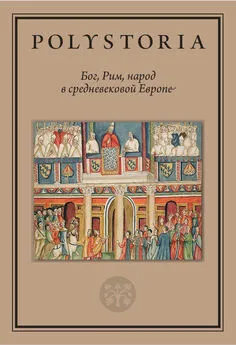
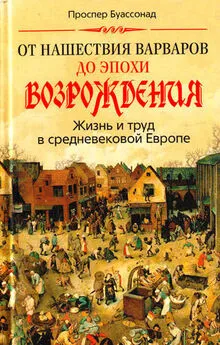

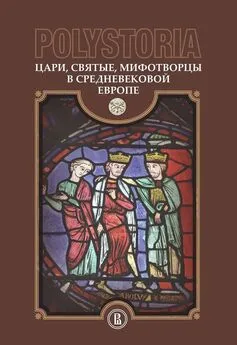
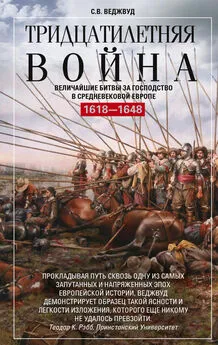
![Ольга Петерсон - Наследники Вюльфингов [предания германских народов средневековой Европы в пересказах Е. Балобановой, О. Петерсон]](/books/1064835/olga-peterson-nasledniki-vyulfingov-predaniya-ger.webp)
![Ольга Петерсон - Рыцари Круглого Стола [предания романских народов средневековой Европы в пересказах Е. Балобановой и О. Петерсон]](/books/1069544/olga-peterson-rycari-kruglogo-stola-predaniya-rom.webp)
